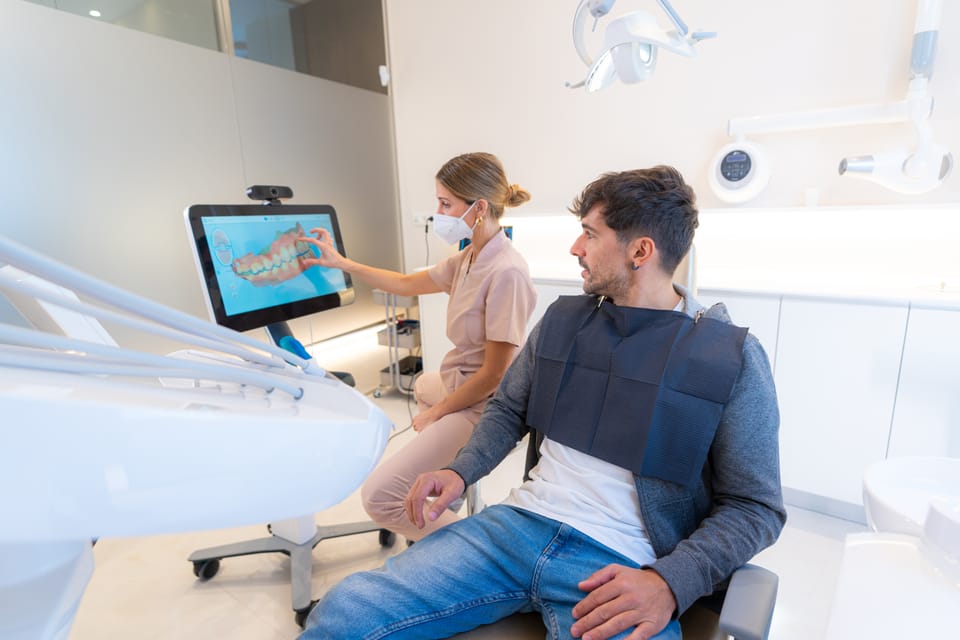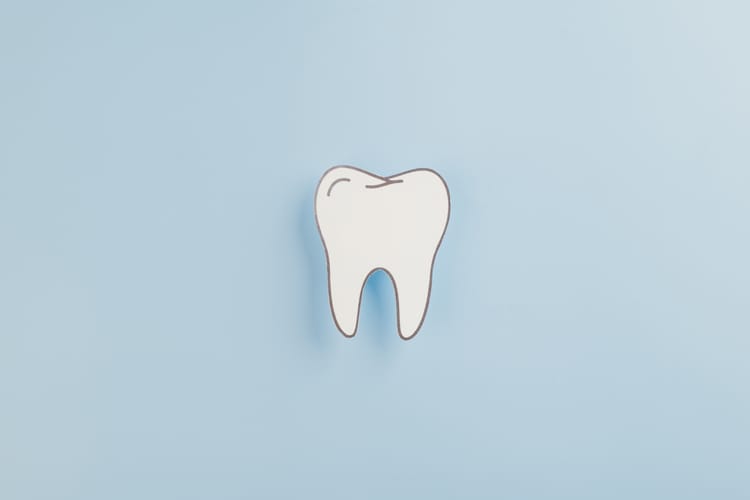AI in dental M&A

AI is everywhere, even in dental mergers and acquisitions. Today, we look at an AI tool that helps match dental business buyers and sellers—plus, an exclusive interview with a dentist who has leaned into digital dentistry. But first: This Florida law would substitute dentists with "dental therapists."
In today's newsletter:
• Digital dentistry wins
• Getting the most from Google reviews
• Insight from the ADA's president-elect
• More research on gut microbiomes and brain health

'Software powered by AI can now design smiles'
Digital dentistry is not new, but the technology is evolving quickly. More powerful imaging capabilities are making treatment planning easier. And, of course, AI is promising even more advances.
Kartik Antani, DMD, is the owner of NAPA Family Dental in Albuquerque and a winner of the coveted New York Academy of Dentistry Ethics Award and was named to the Top 40 Under 40 in New Mexico in 2018.
He spoke to Dental Bite about how he leverages digital dentistry and how he communicates with patients about his use of technology in their care.
What do you the biggest trends in digital dentistry right now?
Digital scanning, treatment planning, modeling and printing are definitely becoming more and more standardized. These technologies aren't necessarily new, but they have matured enough in time to become more dependable, easier to use and less expensive for the clinician.
Al is also speeding towards being more mainstream now. Software powered by AI can now design smiles and teeth, check for disease and contribute to the smooth workflow that digital dentistry provides.
How do you leverage digital dentistry in your practice?
We use 3D imaging, such as CBCTs and intra-oral scans, to perform digital treatment planning, mockups, surgical guides and, of course, checking for diseases that may not be visible on 2D imaging. With the use of digital dentistry, we can predictably place implants in ideal locations, design smiles and even offer single-tooth solutions more precisely. AI helps us cut down on error and inefficiencies.
How do you communicate with patients about your practice's use of technology?
We display our digital dentistry offerings on our website and we also discuss it in-person with patients. It's a good idea to proactively educate patients about these technologies, as sometimes they alleviate their anxiety.
For example, a patient nervous about X-rays may feel better when we mention that it is digital and ultra-low-dose. Another example could be a patient who is worried about impressions and their gag reflex, so we educate them that with intra-oral scanners, they won't feel a thing.
Are there any specific innovations that have the potential to improve digital dentistry and the patient experience in the near future?
Absolutely. AI has already started to make a big impact on digital dentistry and the patient experience, and in time, it will only get better. As new technologies become more streamlined, less expensive and more ubiquitous, dentistry will change for the better. We are on the precipice of very quick and very impactful advancements.

What’s on our radar: Richard Rosato, DMD, the president-elect of the American Dental Association, speaks in this interview about his upcoming leadership goals.
What we're reading: Dental consultant Scott J. Manning, MBA, released a free resource, the "Profit on Purpose Toolkit," to help dentists maximize their practice profitability.
Regulation we’re watching: Legislation reintroduced in California (SB 351) would put limits on private equity groups' involvement in management when entering into agreements with dentists and physicians.
What we're attending: On Feb. 26, Dental Economics is hosting a webinar on how dentists can create passive income.
Plus: The FDA recently approved suzetrigine, a non-opioid painkiller and the first new pain medication to gain approval in the past 25 years.

How dental practices can get more Google reviews
Google reviews can be a powerful tool for driving more business to dental practices, but how can dentists boost their numbers? On the Dental Marketing Theory podcast, Gary Bird talks with Dr. Len Tau, DMD, the general manager of the dental vertical at the social media and reputation management platform Birdeye, about how Google reviews serve as an important part of building an online presence. Together, they talk about ways that dental practices can ethically boost their reviews.
Why it matters: Patients and potential employees often look at Google reviews to help them make decisions about a dental practice. Do they want to trust that practice with their care or their careers? (Dental Marketing Theory)
Can AI improve M&A deal-making in dentistry?
AI is being put to use in the dental practice sale and investment space. Kyle Francis, the founder of Professional Transition Strategies, details how the dental brokerage developed an AI tool for matching buyers and sellers. With private equity interest surging in dentistry, consolidation is a big theme in the space. Finding the right partner in a sale is a delicate process that takes time, but AI could potentially speed it up.
Why it matters: AI could potentially play a role in practice sales. Dentists contemplating a transaction could consider the potential this technology has to facilitate a better deal or understand their rights more easily. (Mergers & Acquisitions)
Another link between oral and brain health
New research adds to scientists' growing understanding of the connection between oral health and the risk of stroke. A study spotlighted at the 2025 American Stroke Association International Stroke Conference found that Streptococcus anginosus is associated with a heightened risk of stroke. This bacteria is commonly found in both the mouth and gut. While more research is needed, this study highlights how the gut microbiome is an important factor to consider when assessing health risks such as stroke.
Why it matters: Dentists have a keen understanding of how oral health is associated with overall health. Studies like this add more evidence to the significant importance of oral health. In the future, simple tests that detect gut bacteria like this could help healthcare providers more accurately assess individuals' risk of stroke. (Dentistry IQ)

- New partnership aims to automate 3D printing in dentistry
- PDS Health partners with Utah college on external rotation program
- How health sharing can connect patients with dental care
- Notes from the first ADA Innovation and Research Consortium meeting
Don't be a stranger.
💠 Reply to this email to connect with our team.
💠 Forward Dental Bite to your colleagues.



